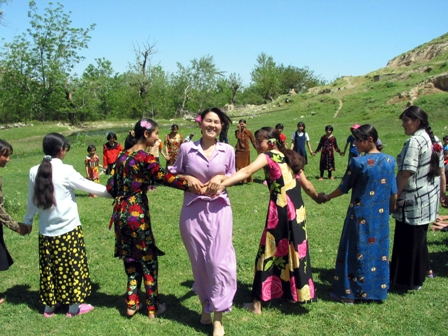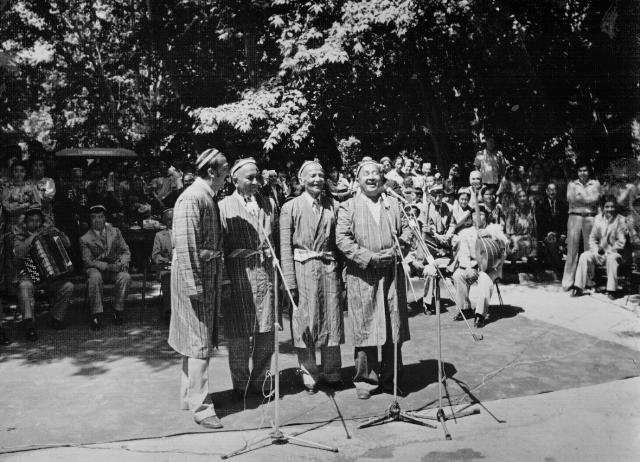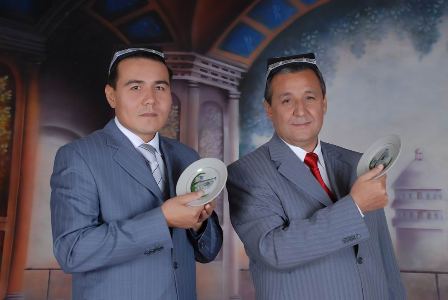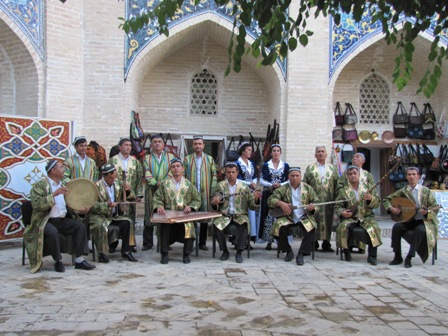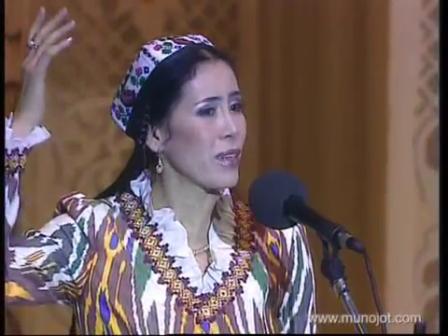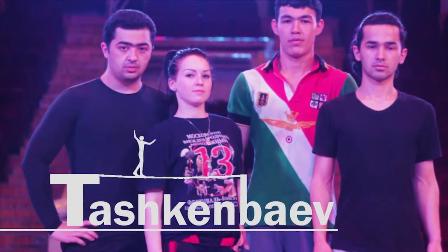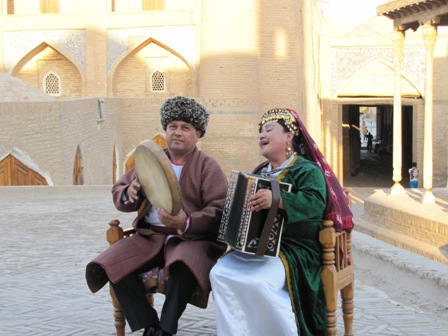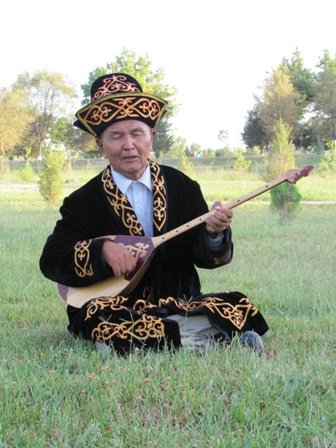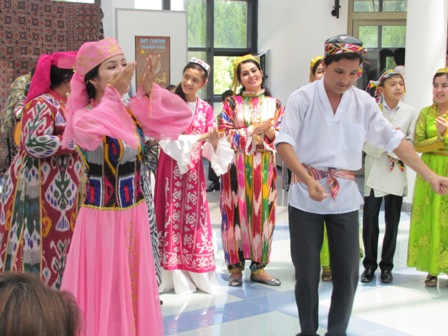Naqsh
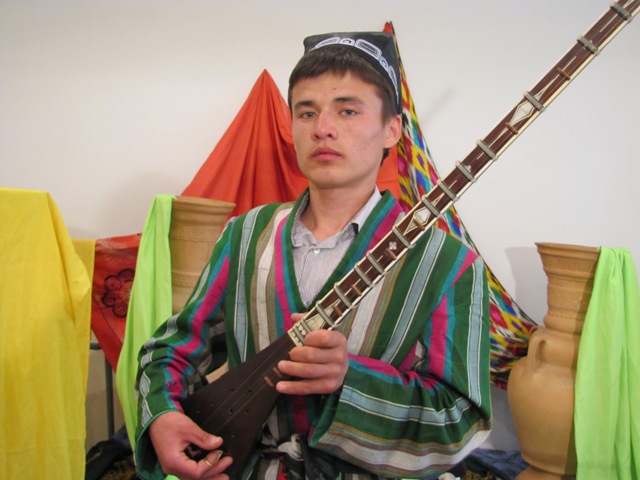
Domain: Performing Arts
Index Number: 02.03.03
Naqsh (literally, "an ornament", "a song", "a form") is a song and a lyrical-vocal piece in Uzbek traditional vocal music. In the Ferghana Valley it represents a widely spread wedding and ritual related song-cycle, which is performed by men while seeing off the groom to the house of bride.
Characteristic features of naqsh can be observed in the use of examples of folk poetry, bilingualism (i.e. it is sung in Uzbek and Tajik languages), and performance without any instrumental accompaniment by usage of strong and high pitched voice. In addition, musical laws and styles of singing in naqsh stand out with their peculiarities.
Naqsh song cycles are represented by Katta naqsh or Naqshi kalon (i.e. Great naqsh), Orta naqsh or naqshi miyona (Middle naqsh), Kichik naqsh or naqshi khurd (Small naqsh), Terma naqsh or naqshi oddiy (Naqshi khalq – simple or folk naqsh). Katta naqsh was performed solo by leading singers without instrumental accompaniment in turns and with a strong and high pitched voice in a free rhythmic manner. These features, to some extent, remind of those to be found in katta ashula. The other naqsh songs were performed solo and by a group without musical accompaniment (for example, terma naqsh was sung in fast tempo by a group in unison). Notably, katta naqsh is more expressive, brighter and emotional, and in terms of character is a recitative-songful one. Its tempo is gradual and progresses to the culmination point. In contrast to it, other naqsh songs have small intonation and melodic structure, though singing is very emotional. In some districts of Ferghana region of Uzbekistan it is possible to observe existence of naqsh as performed by folk singers during wedding ceremonies.
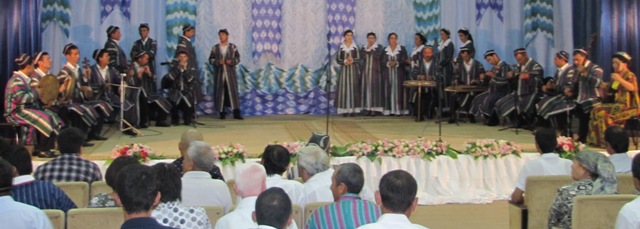 Naqsh is a developed vocal piece, which is used as an independent piece or part of vocal section of the cycle of Khoresm maqoms; or as a vocal piece of Ferghana-Tashkent maqom cycles. In the medieval treatises of scholars dedicated to music, naqsh was considered as a perfect musical piece, which had its own original melodic, rhythmical, musical and poetical structure. For instance, Naqshi Bayot was an original as well as complex vocal form and genre. The types of naqsh, which are to be found in maqoms, in terms of their feature, correspond to usuls of Savt. From the perspective of intonation and rhythm they are even closer to Talqin and Nasr, which are main vocal parts of maqoms (for instance, Segoh naqshi). In Khoresm dutar maqoms (in accordance with "Khoresm tanbur notation") it is possible to find several naqsh songs, such as Naqshi miskin, Naqshi Talqini Urganji, Naqshi sadri iroq, etc.
Naqsh is a developed vocal piece, which is used as an independent piece or part of vocal section of the cycle of Khoresm maqoms; or as a vocal piece of Ferghana-Tashkent maqom cycles. In the medieval treatises of scholars dedicated to music, naqsh was considered as a perfect musical piece, which had its own original melodic, rhythmical, musical and poetical structure. For instance, Naqshi Bayot was an original as well as complex vocal form and genre. The types of naqsh, which are to be found in maqoms, in terms of their feature, correspond to usuls of Savt. From the perspective of intonation and rhythm they are even closer to Talqin and Nasr, which are main vocal parts of maqoms (for instance, Segoh naqshi). In Khoresm dutar maqoms (in accordance with "Khoresm tanbur notation") it is possible to find several naqsh songs, such as Naqshi miskin, Naqshi Talqini Urganji, Naqshi sadri iroq, etc.
The bearers of naqsh traditions are Madraim Sherozi, Komiljon Otaniyozov, Rozimat Jumaniyozov and others.





